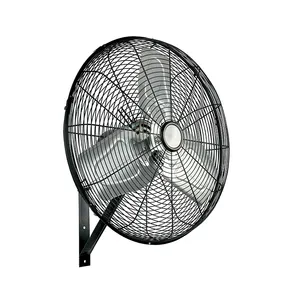
All categories
Featured selections
Trade Assurance
Buyer Central
Help Center
Get the app
Become a supplier

(8226 products available)














































While most people might think fan blades only come in one design, this is not the case. There are several types of fan blades designed for specific purposes and applications. Here are some of them:
Various types of fan blades differ in specifications. Below are some standard specifications:
Size
The size of a fan blade affects the airflow it produces. Larger blades have a wider surface area that pushes more air, thus generating a greater breeze. The size is also essential for safety and clearance considerations. Bigger blades need sufficient space to rotate without colliding with other objects.
Material
Various materials are used to manufacture fan blades, and each has its unique features. Wood blades provide a traditional and attractive appearance. Metal blades like those made from steel are more durable and ideal for outdoor settings. Plastic blades are lightweight and cost-effective.
Number of Blades
The number of blades in a ceiling fan can affect its performance and aesthetics. Fans with fewer blades, like three, tend to rotate faster and produce more wind. They are energy efficient and suited for warmer climates. Five-blade fans are more common because they offer a balanced airflow and quieter operation.
Blade Pitch
This is the angle of the blades in relation to the fan's motor. A higher pitch, which means a steeper angle, results in more air resistance. The fan consequently generates more airflow. Fans with lower pitches provide a gentler breeze and are quieter.
Blade Shape
Fan blades come in a wide range of shapes, from traditional to modern designs. The shape affects the airflow pattern and aesthetic appeal. Curved blades move air efficiently, while decorative blades add a stylish touch to the fan.
Surface Coating
Fan blades undergo treatments such as painting or varnishing for protection and aesthetics. The coating's color and finish affect the fan's appearance and the blades' resistance to corrosion and fading.
Regular maintenance of fan blades is essential to ensure optimal performance and longevity. Dust and debris accumulation on fan blades reduces their efficiency. Therefore, it is important to clean them regularly using a soft cloth or a duster. For difficult-to-reach blades, a ladder can be used. A damp cloth or mild detergent can be used when there are stubborn stains or dirt.
Fans tend to produce a squeaky sound when they rotate due to the accumulation of dust or lack of lubrication. Inspecting the fan regularly helps to identify any potential issues and address them in good time. Lubricating the motor and moving parts reduces friction and prevents wear and tear. Using the recommended lubricant is important for effective results. This ensures that the fan operates smoothly.
Occasionally, fan blades may become loose due to prolonged use. This can affect the balance and performance of the fan. It is advisable to check the blades and tighten them securely to prevent accidents and ensure optimal airflow. Fans are more efficient when they are well aligned. Proper alignment of fan blades ensures even spacing and the right angle, thus maximizing airflow and reducing noise.
When shopping for fan blades, it’s essential to understand the needs of the target market. Here are some factors to consider when choosing fan blades:
Below are the simple steps for replacing fan blades:
Turn Off Power
To prevent accidents, turn off the fan and disconnect its power supply.
Remove the Light Kit (if applicable)
If the fan has a light kit, remove it to access the fan blades.
Unscrew the Fan Motor Housing
Loosen the screws holding the motor housing and detach it to reach the blades.
Remove Old Fan Blades
Unscrew the blades one by one, starting with the ones closest to the center.
Prepare New Fan Blades
Align the new blades with the mounting holes and ensure they are evenly spaced.
Install New Fan Blades
Screw in the new blades, tightening the screws securely to prevent wobbling.
Reattach the Fan Motor Housing
Put the motor housing back and secure it with screws.
Reconnect the Light Kit (if applicable)
Attach the light kit again, ensuring all electrical connections are secure.
Restore Power and Test
Reconnect the power supply, turn on the fan, and check for proper operation.
Q1: Do fan blades make a difference?
A1: Yes. Fan blades are important parts of a fan. They help move air when they spin. The shape and angle of the fan blades affect how much air they push. Different kinds of fan blades work better for pushing different amounts of air. So, fan blades can make a difference in how well a fan performs.
Q2: What materials are fan blades made of?
A2: Fan blades can be made from a variety of materials, each with its benefits. Wood is one traditional material that gives a warm, natural look but needs more maintenance. Metal, like steel or aluminum, is strong and often used in modern designs. Plastic is a lightweight and inexpensive option, although it may not last as long as metal or wood. Composites combine materials for added strength and beauty. The choice depends on the desired style, function, and budget.
Q3: What is the difference between wood and metal fan blades?
A3: Wood fan blades are quieter than metal ones. Metal fans move more air than wood blades. Metal fan blades are more durable than wood blades. Fan blades made of wood give a warm, natural look, while metal blades have a more modern appearance.
Q4: How do different fan blade designs affect performance?
A4: Different fan blade designs affect performance through their shape, pitch, and number of blades. Blades with a high pitch move more air and create a stronger breeze than those with a low pitch. Similarly, fewer blades result in more airflow than fans with many blades. Blade shape also plays a role; wider blades push more air than narrower ones. Ultimately, each design element influences the fan's airflow and efficiency.